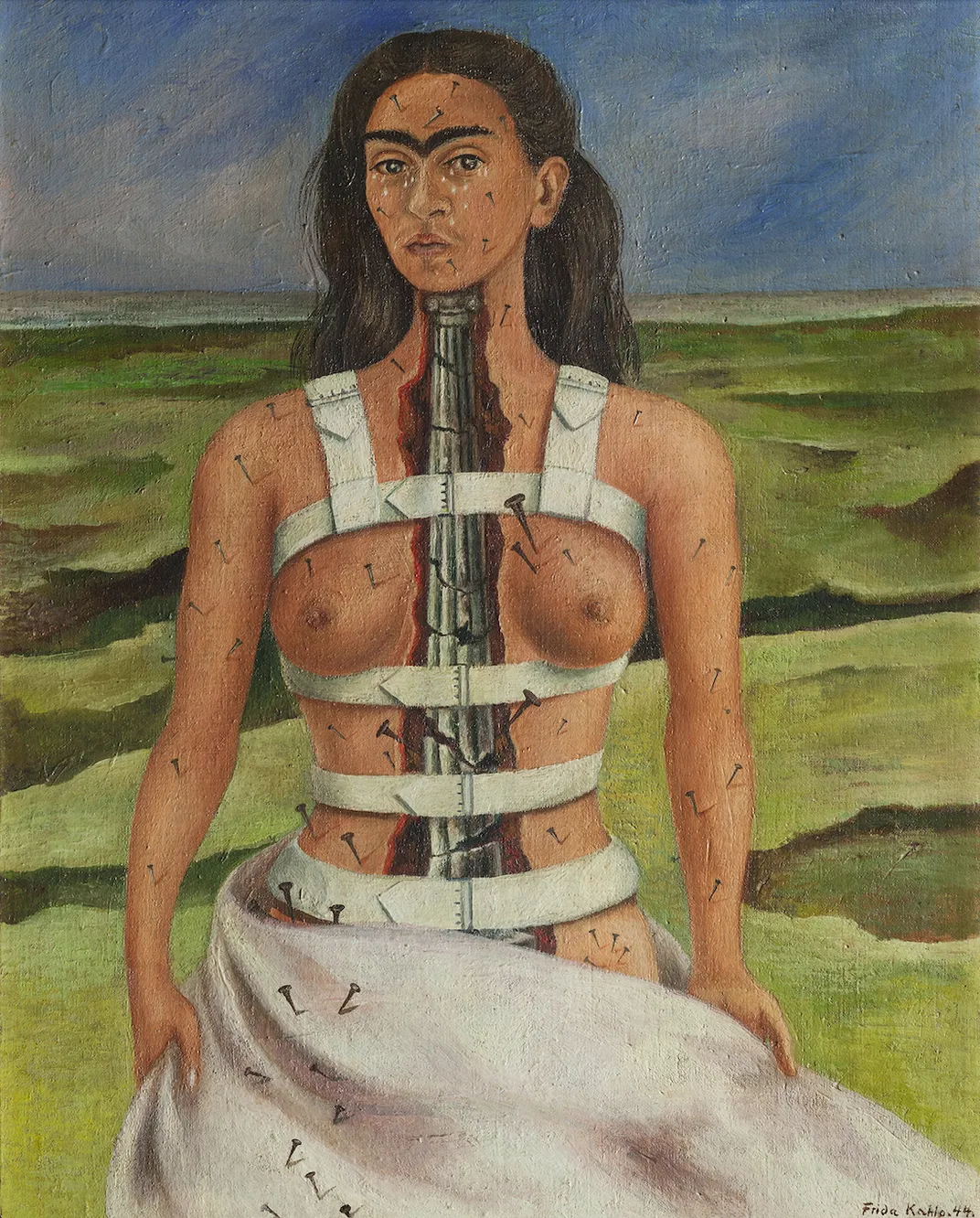‘Once-in-a-Lifetime’ Frida Kahlo Retrospective Debuts in Chicago Suburbs
The monumental exhibition features 26 of the Mexican painter’s works—a staggering 10 percent of her oeuvre
:focal(411x236:412x237)/https://tf-cmsv2-smithsonianmag-media.s3.amazonaws.com/filer/44/5f/445fa65d-0dbd-435d-87d3-a21170d048b4/fridaa.jpg)
When Frida Kahlo died in 1954 at age 47, she left behind approximately 200 paintings, drawings and sketches. Steeped in allegory, the Mexican artist’s richly detailed compositions immortalized painful events in her life and probed themes of sexuality, national identity and post-revolutionary politics that continue to resonate with viewers today.
The mega-famous painter often headlines retrospectives in major cities around the world. But over the weekend, a staggering 26 Kahlo works—about 10 percent of her oeuvre—went on view on a smaller stage: Glen Ellyn, a western suburb of Chicago.
Per a statement, “Frida Kahlo: Timeless,” hosted by the Cleve Carney Museum of Art and the McAninch Arts Center at the College of DuPage, runs through September 6 and will not travel anywhere else. Organizers undertook a $2.8 million renovation of the museum in anticipation of the exhibition’s summer 2020 opening, which was pushed back due to the Covid-19 pandemic, reports the Chicago Sun-Times’ Kyle MacMillan.
Despite its delayed start, Kahlo’s starpower alone is predicted to draw large numbers of visitors to the region. DuPage County tourism officials anticipate that the exhibition will infuse nearly $8 million into the town’s economy during its three-month run, according to Katlyn Smith of the local Daily Herald.
“An exhibition like this usually goes to Milan, Budapest, Moscow or the Art Institute,” Diana Martinez, director of the McAninch Arts Center, tells the Chicago Sun-Times. “This is a once-in-a-lifetime exhibition opportunity that’s coming to Glen Ellyn. This is so unusual.”
All the works in the show are on loan from the Museo Dolores Olmedo in Mexico City. Per Google Arts & Culture, Olmedo (1908–2002) was a wealthy Mexican businesswoman and art collector who formed close friendships with Kahlo and her husband, muralist Diego Rivera.
During her lifetime, Olmedo amassed the largest known private collection of Kahlo’s works. As critic Steve Johnson writes in a review for the Chicago Tribune, her son Carlos Phillips Olmedo, director and founder of the museum that bears his mother’s name, later became friends with Alan Peterson, a Glen Ellyn businessman and longtime donor to DuPage—a connection that explains how such a major exhibition made its way to the suburban college museum.
Olmedo’s collection offers a broad cross section of Kahlo’s oeuvre, including some of her earliest works and a handful of her most famous ones, such as Self-Portrait With Small Monkey (1945).
“Although only a few—especially The Broken Column, Kahlo’s self-portrait with her fractured spine visible amid her nude, corseted body—count among the most famous of Kahlo paintings, it’s an idiosyncratic and compelling selection of her work, in part because it was assembled by an avid collector,” Johnson writes.
Kahlo began painting at age 18, after a traumatic 1925 bus accident left her temporarily bedridden. Echoes of this trauma resonate in the setting of The Bus (1929), which depicts men and women of various professions and racial identities sitting side by side in a streetcar. The composition—one of the more than two dozen on view in Glen Ellyn—also reflects Kahlo’s political investment in the ideals of the Mexican Communist Party, which she had joined about two years earlier.
In a 1927 portrait of her neighbor and friend Alicia Galant, meanwhile, museum visitors can see Kahlo’s style starting to develop. The sitter appears somber, framed by eerie dark clouds and posing in a manner reminiscent of a statuesque Sandro Botticelli figure. Per Google Arts & Culture, young Kahlo considered this work a major accomplishment, even writing on a note on the back of the canvas: “My first work of art, Frida Kahlo 1927.”
Another rare highlight of the show is The Circle, which the artist painted toward the end of her life. The bus accident and a childhood bout of polio left Kahlo with lifelong disabilities and chronic pain that worsened sharply in the year leading up to her death.
Marcela Andrade Serment, associate curator of the exhibition, tells the Tribune that this work is “so different from [Kahlo’s] other pieces.”
The small, fragmented image of a female body appears framed by green and red flames, as though it has been blown apart in an explosion. Kahlo painted the work on a circular metal sheet, and Serment points out that it’s “missing a lot of the finesse and detail in the painting like you would have seen otherwise in some of her earlier pieces.”
She adds, “I think it really shows you just how much her body was deteriorating at that point.”
In an interview with Jen Banowetz of the Naperville Sun, curator Justin Witte notes that Kahlo’s lifelong struggle with chronic pain and illness might resonate anew with some audience members in the wake of the Covid-19 pandemic.
“While Kahlo’s work focuses on her story and the world around her, new generations of viewers continue to connect with and find strength in the direct and honest depiction of her life and the obstacles she faced,” Witte says. “[I]t is in this way that Frida Kahlo and her work remain timeless.”
“Frida Kahlo: Timeless” is on view at the Cleve Carney Museum of Art in Glen Ellyn, Illinois, through September 6.
/https://tf-cmsv2-smithsonianmag-media.s3.amazonaws.com/accounts/headshot/nora.png)

/https://tf-cmsv2-smithsonianmag-media.s3.amazonaws.com/filer/ca/03/ca03384c-f92c-4bcf-97bc-65f8c45ea315/3_frida_on_white_bench_photo_by_nickolas_muray__nickolas_muray_photo_archives.jpg)
/https://tf-cmsv2-smithsonianmag-media.s3.amazonaws.com/filer/b7/d4/b7d4b199-772f-4039-a291-6ed9a4b994a9/8_frida_kahlo_the_bus_1929_oil_on_canvas_collection_museo_dolores_olmedo_xochimilco_mexico__2020_banco_de_mexico_diego_rivera_frida_kahlo_museums_trust_mexico_df__artists_rights_society_ars_new_york.jpg)
/https://tf-cmsv2-smithsonianmag-media.s3.amazonaws.com/filer/33/d9/33d9f0b3-8072-4bf3-ba14-508908eb8855/screen_shot_2021-06-04_at_35052_pm.png)
/https://tf-cmsv2-smithsonianmag-media.s3.amazonaws.com/accounts/headshot/nora.png)